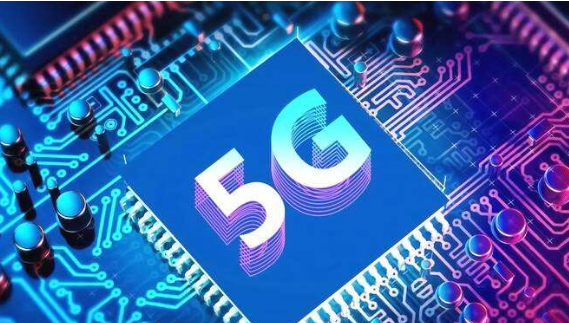What should communication modules do in the 5G era?
There are many examples of the importance of communication in the smart era consisting of 5G and AI, such as smart energy. Drones equipped with 5G modules can quickly perform AI inspections of electrical circuits, which not only greatly improves efficiency, but also protects the lives of workers. Another example is smart healthcare, where doctors can operate robots with the help of AI from thousands of miles away, for example, TV stations can perform live 4K HD broadcasts without the need for a satellite connection prior to a 5G network connection, dramatically increasing the flexibility and efficiency of the rollout. There are many similar examples, all of which place extreme demands on high speed, low latency and reliability of communications. Outstanding 5G communication modules are the foundation for all of these new technology applications.

So what should communication modules do in the 5G era?
First, a technical support skills manual is needed. We know that industrial-grade products are not deployed nearly as fast as consumer products. Therefore, in addition to the requirement for high performance and reliability, it has a 5-15 year lifecycle, and the performance is fully scaled during this cycle, and can be scaled to the point where we will continue to upgrade to meet future development needs.
 Secondly, it also needs to have the ability to benefit most productivity environments - in other words, the cost and threshold cannot be too high. In the 5G industrial module industry, the entry fee for chip development runs into the millions of dollars, which results in a final product costing $200 to $300 to purchase test samples. High prices are not conducive to the inclusiveness of the technology.
Secondly, it also needs to have the ability to benefit most productivity environments - in other words, the cost and threshold cannot be too high. In the 5G industrial module industry, the entry fee for chip development runs into the millions of dollars, which results in a final product costing $200 to $300 to purchase test samples. High prices are not conducive to the inclusiveness of the technology.

At this time, Huawei launched a 5G industrial module for only RMB 999 on October 23, and its price shocked the whole industry. The module not only includes the price, but also inherits Huawei's usual features - the use of self-developed 5G chip Baron 5000, with core independent property rights and independent control, so the 5G module no longer relies on imported chips. At the same time, the module is a global leader in technology, not only being the first industrial module to support 5GNSA / SA dual-mode, but also the world's first single-core full-mode 5G industrial module.
 I'm sure everyone has heard of the Baron5000. the chip features a single-core, multi-mode, high-speed, uplink and downlink decoupling, supports dual-module SA (5G stand-alone network) and NSA (5G non-stand-alone network) networks, support for C-V2X and many other world-leading features. Powered by the Barron 5000, Huawei's 5G industrial module delivers downlink rates of up to 2Gbps and uplink rates of up to 230Mbps, leading the industry in terms of performance. It also features an application processor with 14,400 DMIPS of computing power - five times the industry average - and the ability to open up to industry applications. In terms of reliability, to adapt to all-weather operating environments, the Huawei 5G Industrial Module has an operating temperature range of -40°C to + 85°C, which makes it stable and reliable for summer days, even in snowy or hot weather. It also features a dual-layer security mechanism with hardware-level TrustZone plus a microkernel. All security mechanisms and algorithms are done in the TrustZone with the microkernel as the operating system to ensure secure booting, secure storage and secure encryption and decryption.
I'm sure everyone has heard of the Baron5000. the chip features a single-core, multi-mode, high-speed, uplink and downlink decoupling, supports dual-module SA (5G stand-alone network) and NSA (5G non-stand-alone network) networks, support for C-V2X and many other world-leading features. Powered by the Barron 5000, Huawei's 5G industrial module delivers downlink rates of up to 2Gbps and uplink rates of up to 230Mbps, leading the industry in terms of performance. It also features an application processor with 14,400 DMIPS of computing power - five times the industry average - and the ability to open up to industry applications. In terms of reliability, to adapt to all-weather operating environments, the Huawei 5G Industrial Module has an operating temperature range of -40°C to + 85°C, which makes it stable and reliable for summer days, even in snowy or hot weather. It also features a dual-layer security mechanism with hardware-level TrustZone plus a microkernel. All security mechanisms and algorithms are done in the TrustZone with the microkernel as the operating system to ensure secure booting, secure storage and secure encryption and decryption.

In terms of in-vehicle modules, Huawei released the world's first 5G in-vehicle module supporting 5G + C-V2X technology in April. It offers high performance, high integration, and low power consumption. While leading the way in hardware performance, it uses OpenCPU to open up the software architecture and comes with a complete SDK, allowing developers in the automotive industry to use Huawei's 5G in-vehicle module to develop rich in-vehicle network applications. Its built-in C-V2X stack enables automotive companies to develop a small number of C-V2X scenarios, such as vehicle warnings and traffic light communications, and to truly empower both technology and ecology.
Huawei has been practicing intelligent full scenarios to realize full-stack, full-scene AI everywhere. With the advent of the 5G era, this vision will become extremely close. On the technical level, especially the underlying technology has always been Huawei's strength, but in the new era, technological progress is not enough. Cross-industry integration of advanced technologies requires good ecological empowerment in order for technology to develop into a productivity-enhancing storm.





 Secondly, it also needs to have the ability to benefit most productivity environments - in other words, the cost and threshold cannot be too high. In the 5G industrial module industry, the entry fee for chip development runs into the millions of dollars, which results in a final product costing $200 to $300 to purchase test samples. High prices are not conducive to the inclusiveness of the technology.
Secondly, it also needs to have the ability to benefit most productivity environments - in other words, the cost and threshold cannot be too high. In the 5G industrial module industry, the entry fee for chip development runs into the millions of dollars, which results in a final product costing $200 to $300 to purchase test samples. High prices are not conducive to the inclusiveness of the technology.
 I'm sure everyone has heard of the Baron5000. the chip features a single-core, multi-mode, high-speed, uplink and downlink decoupling, supports dual-module SA (5G stand-alone network) and NSA (5G non-stand-alone network) networks, support for C-V2X and many other world-leading features. Powered by the Barron 5000, Huawei's 5G industrial module delivers downlink rates of up to 2Gbps and uplink rates of up to 230Mbps, leading the industry in terms of performance. It also features an application processor with 14,400 DMIPS of computing power - five times the industry average - and the ability to open up to industry applications. In terms of reliability, to adapt to all-weather operating environments, the Huawei 5G Industrial Module has an operating temperature range of -40°C to + 85°C, which makes it stable and reliable for summer days, even in snowy or hot weather. It also features a dual-layer security mechanism with hardware-level TrustZone plus a microkernel. All security mechanisms and algorithms are done in the TrustZone with the microkernel as the operating system to ensure secure booting, secure storage and secure encryption and decryption.
I'm sure everyone has heard of the Baron5000. the chip features a single-core, multi-mode, high-speed, uplink and downlink decoupling, supports dual-module SA (5G stand-alone network) and NSA (5G non-stand-alone network) networks, support for C-V2X and many other world-leading features. Powered by the Barron 5000, Huawei's 5G industrial module delivers downlink rates of up to 2Gbps and uplink rates of up to 230Mbps, leading the industry in terms of performance. It also features an application processor with 14,400 DMIPS of computing power - five times the industry average - and the ability to open up to industry applications. In terms of reliability, to adapt to all-weather operating environments, the Huawei 5G Industrial Module has an operating temperature range of -40°C to + 85°C, which makes it stable and reliable for summer days, even in snowy or hot weather. It also features a dual-layer security mechanism with hardware-level TrustZone plus a microkernel. All security mechanisms and algorithms are done in the TrustZone with the microkernel as the operating system to ensure secure booting, secure storage and secure encryption and decryption.









